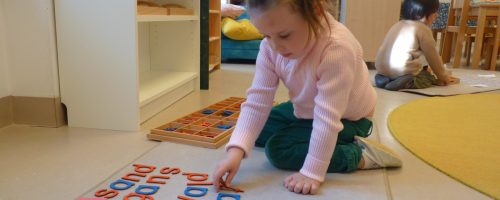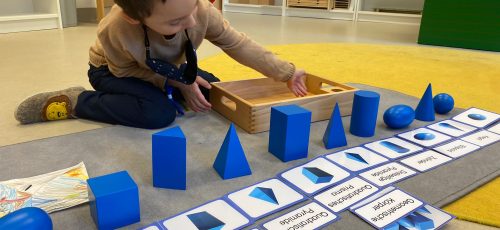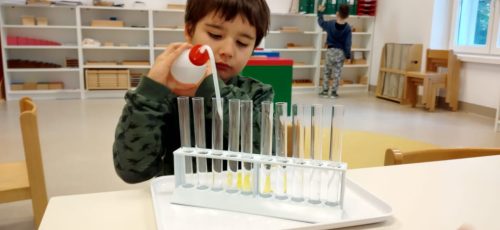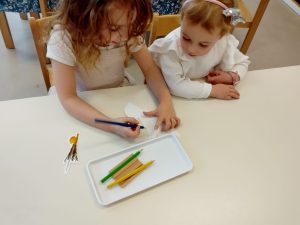Programs
Montessori
Method
- Individualized Curricula that adapt to the child’s stage of development
- One-on-one instruction: Hands-on and meaningful, experience – based learning
- Instruction that incorporates the four core learning styles: visual, auditory, reading/writing, and kinesthetic
- A method that cultivates independence and decision – making
- Teachers who respect the child´s freedom
- Engaging sensory learning materials that transform abstract concepts into concrete ones
- An education that supports self-regulation and intrinsic motivation
The Jewish Montessori School Vienna offers two programs:

Prepared Environment
Learning is set-up in a complex, realistic, and meaningful
environment that nurtures self-aware construction of knowledge.
Opportunity


Learning Materials
Information is presented in multiple ways using materials that are both broad and deep in scope. Only real-life learning materials especially designed to fit into a child´s hand are used.
Freedom of Movement


Independence
Learn more about:
The Montessori Prepared Environment
A Prepared Environment represents a calm, loving, developmentally appropriate environment that is filled with meaningful and relevant materials, with which learners can easily interact. The Montessori pedagogy considers the environment a fundamental part in a child´s education, and is a key component of the child-adult-environment equation. All learning materials are objects of enquiry – meaning they stimulate a child´s reasoning mind, children are encouraged not forced) to explore it and they feel naturally driven to understand it, which in turn, leads to children with higher IQs.
The Montessori Educators
The Montessori Materials
“Nothing goes into the mind that does not first go through the hands.” Dr. Maria Montessori
The particular feature of the Montessori materials is functionality and relevance. The full array of specialized Montessori materials that endow a classroom are designed to simplify abstract concepts. The children get to use them in a logical and ordered sequence, according to their developmental needs and interests.
The learning materials are used in a clear and logical structure which promotes ordered learning and a progressive layering of knowledge.
Examples of Materials:
- Moveable Alphabet – for letter recognition and word construction
- Sandpaper Letters to teach them the sound of each letter by training muscle and visual memory.
- Numbers and Counters that helps children understand numbers, sequencing, quantities, and parts.
- Puzzle: Map of the World for a visual introduction into continents, hemisphere, and geographical forms.
- Cleaning/cooking/household jobs equipment and activities (suitably adjusted for size and age)
- Sensorial objects
- Child- sized utensils and equipment (e.g. cooking utensils for tiny hands, low shelves so children can independently access materials and resources).
The Montessori Classrooms
The Montessori classrooms are intentionally multi-aged classrooms.
The multi-aged classrooms favor peer learning and teaching and the exchange of knowledge, as well as group-work and collaboration. Children learn to adapt to each other´s levels of understanding and learn to convey information at various degrees of complexity.
Academic studies conducted in the US shoed that Montessori students score consistently higher on math and reading tests than their non-Montessori peers.


